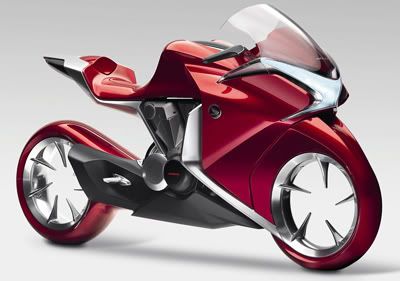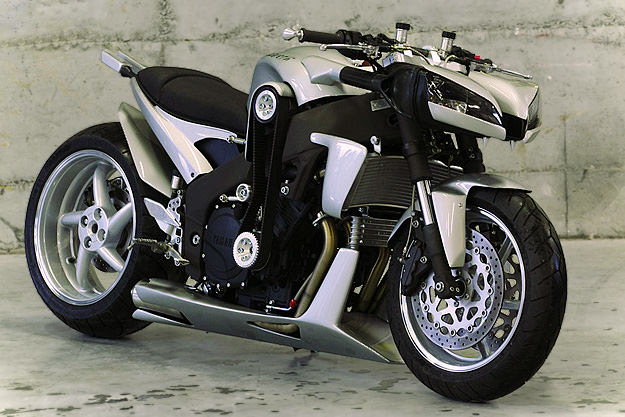Choose MV AGUSTA motorcycle by MODELS
- MV AGUSTA desktop wallpapers -
Motorcycle Wallpapers, choose by BRANDS>
MV AGUSTA Motorcycle Models
MV AGUSTA (2007)
| Brutale 910R Italia | F4 CC |
MV AGUSTA (2006)
| Brutale 910R | F4-1000 Senna | F4-1000 Tamburini | F4-1000 Veltro Strada | F4 1000S 1+1 |
MV AGUSTA (2005)
| F4 1000MT Tamburini | F4 1000S 1+1 |
MV AGUSTA (2006)
| Brutale 910R | F4-1000 Senna | F4-1000 Tamburini | F4-1000 Veltro Strada | F4 1000S 1+1 |
MV AGUSTA (2005)
| F4 1000MT Tamburini | F4 1000S 1+1 |
MV AGUSTA Motorcycle
MV Agusta is a motorcycle manufacturer founded in 1945 near Milan in Cascina Costa, Italy. The company began as an offshoot of the Agusta aviation company which was formed by Count Giovanni Agusta in 1923. The Count died in 1927, leaving the company in the hands of his wife and sons, Domenico, Vincenzo, Mario and Corrado. Count Vincenzo Agusta together with his brother Domenico formed MV Agusta (the MV stood for Meccanica Verghera) at the end of the Second World War as a means to save the jobs of employees of the Agusta firm and also to fill the post-war need for cheap, efficient transportation. The company manufactured small-displacement, Café racer style motorcycles (mostly 125 to 150 cc) through the 1950s and 1960s. In the 1960s small motorcycle sales declined, and MV started producing larger displacement cycles in more limited quantities. A 250 cc, and later a 350 cc twin were produced, and a 600 cc four-cylinder evolved into a 750 cc which is still extremely valuable today. History Count Vincenzo and Domenico Agusta had a passion for mechanical workings and for motorcycle racing. Much like Enzo Ferrari, they produced and sold motorcycles almost exculsively to fund their racing efforts. They were determined to have the best Grand Prix motorcycle racing team in the world and spared no expense on their passion. MV Agusta produced their first prototype, called "Vespa 98", in 1945. After learning that the name had already been registered by Piaggio for its Vespa motorscooter, it was referred to simply by the number “98”. In 1948, the company built a 125 cc two-stroke single and entered Franco Bertoni in the Italian Grand Prix. Bertoni won the event held in Monza and instantly put the new motorcycle manufacturer on the map. In 1949 season, the 125 cc or Ultra light weight class gained new prestige. More motorcycle manufacturers were competing in the inaugural World Championships that were held in Switzerland, Holland and Italy. The Mondial 125 cc DOHC design dominated the 1949 season. The MV riders placed 9th and 10th in the final standings. In 1950, Arturo Magni and Piero Remor joined the company after working with Gilera. Magni was the chief mechanic and Remor was chief designer [1]. The 1950 season and 1951 season were development years, as the company adopted the 125 Dohc four-stroke engine. Racing efforts only produced a fifth place finish at the Dutch TT in 1950. The 1951, results were only slightly better. The 1952 season saw the introduction of telescopic forks, full width alloy brake hubs and a sleek fuel tank on the 125 race bike. Power was 15 bhp (11 kW) @ 10800 rpm. Britain's Cecil Sandford piloted the new MV 125 to a 1952 Isle of Man TT victory and went on to win MV Agusta's first world championship. With the success of the 1952 season, independent or “privateer” riders could now purchase a “catalog” version of the 125 Dohc, now available through the company. The Sport Competizione racer had many of the same features as the factory bike. These included a multi-plate clutch, gear-driven oil pump, Dell'Orto 27mm SS1 carburetor and remote float chamber. The bike was nick-named “The Boy Racer”. In 1953 the race engineers adopted the Earl-type forks to help with handling problems on the works racers. The 1953 season saw the introduction of the 350 Four. MV’s racing efforts now included the 500 cc, 350 cc and 125 cc class. The mid 1950s saw the introduction of the 175 cc class. MV Agusta produced the 175 CSS for street use and also developed a 175 cc production racer for privateer racing. The 175 cc was very popular in Britain in the mid 1950s. Racers like, Micheal O’Rourke, Derek Minter and Bob Keeler raced the 175 and 125 Sport Competizione around Europe with a great deal of success. The marketing strategy of “race it on Sunday , sell it on Monday” was employed. For racing, early MV racing engines had the right side casting removed for instant access to the gear box. After the 1957 Grand Prix motorcycle racing season, the Italian motorcycle manufacturers Gilera, Moto Guzzi and Mondial, jointly agreed to withdraw from Grand Prix competition, citing escalating costs and diminishing motorcycle sales as a reason. Count Agusta originally agreed to withdraw, but then had second thoughts. MV Agusta would go on to dominate Grand Prix racing, winning 17 consecutive 500 cc world championships. Count Agusta's competitive nature usually saw him hire some of the best riders of the time, namely Carlo Ubbiali, John Surtees, Mike Hailwood, Giacomo Agostini, Phil Read, among others, and having the best engineers, most notably Arturo Magni. The three and four cylinder race bikes were known for their excellent road handling. The fire-engine red racing machines became a hallmark of Grand Prix racing in the 1960s and early 1970s. With the death of Count Domenico Agusta in 1971, the company lost its guiding force. The company won their last Grand Prix in 1976, and by the 1980 Grand Prix motorcycle racing season, they were out of racing. Shortly thereafter, they ceased motorcycle production. Between 1948 and 1976 MV Agusta motorcycles had won over 3000 races and 63 World Championships overall. After MV Agusta left the racing scene in 1980, Magni began producing his own custom-framed MV motorcycles.Motorcycle Insurance Informations
|












No comments:
Post a Comment